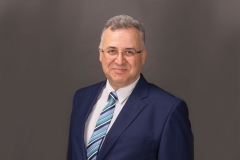
FACULTY OF ARTS AND SCIENCES
Department of Physics
GEAR 212 | Course Introduction and Application Information
| Course Name |
Basic Photography
|
|
Code
|
Semester
|
Theory
(hour/week) |
Application/Lab
(hour/week) |
Local Credits
|
ECTS
|
|
GEAR 212
|
Fall/Spring
|
2
|
2
|
3
|
6
|
| Prerequisites |
None
|
|||||
| Course Language | ||||||
| Course Type |
Second Foreign Language
|
|||||
| Course Level |
-
|
|||||
| Mode of Delivery | - | |||||
| Teaching Methods and Techniques of the Course | DiscussionQ&ACritical feedbackApplication: Experiment / Laboratory / WorkshopLecture / Presentation | |||||
| Course Coordinator | ||||||
| Course Lecturer(s) | ||||||
| Assistant(s) | - | |||||
| Course Objectives | The main objective of the course is to develop a working knowledge of photography through the application of skills regarding camera choices, lens choices, camera operation (aperture/shutter speed/ISO), lighting, composition and image processing. Through a series of genre-oriented assignments, students will learn to shoot and edit according to assignments/client briefs. |
| Learning Outcomes |
The students who succeeded in this course;
|
| Course Description | Through bi-weekly assignments, students are expected to produce photographs according to the demands/technical requirements of the following genres: street photography, architectural photography, product photography, and fashion photography. |
|
|
Core Courses | |
| Major Area Courses | ||
| Supportive Courses | ||
| Media and Management Skills Courses | ||
| Transferable Skill Courses |
WEEKLY SUBJECTS AND RELATED PREPARATION STUDIES
| Week | Subjects | Related Preparation |
| 1 | Introduction | |
| 2 | History of Photography & Photography Basics | Davenport, A., 1991, The History of Photography, Focal Press: Boston, ISBN: 0-8263-2076-7 p.3-29. Turner, P., 1987, History of Photograph, Bison Books Corp: USA, ISBN: 0-671-08923-4, p. 11-35. Stuckey, S., National Geographic Complete Photography, 2011, National Geographic Society: USA, ISBN: 978-142620776, p. 9-196. |
| 3 | Photography Basics II & Assignment | Diprose, G. and Robins, J., 2012, Photography: the new basics: principles, techniques and practice, Thames&Hudson: United Kingdom, ISBN: 978-0-500-28978-5, p. 45-68 and p.113-140. |
| 4 | Project I (%10) Change your angle! | |
| 5 | Project I Continues & Adobe Camera Raw Workshop | Sheppard, R., 2008, Adobe Camera Raw For Digital Photographers Only, 2nd ed., Wiley Publishing: Indiana, ISBN: 978-0-470-22457-1, p.73-266. |
| 6 | Project II (%10) Portrait Photography & Basics of Photostudio Equipment | Child, J. , Studio Photography Essential Skills, 2008, 4th ed., Focal Press: Canada, ISBN: 978-0-240-52096-4, p. 45-126 Lewinski, J. and Magnus, M., The Book of Portrait Photography, 1982, Alfred A. Knopf Inc. : New York, ISBN: 978-0394524689, p.6-72 Smith, B., Secrets of Great Portrait Photography: Photographs of the Famous and Infamous, 2013, New Riders: USA, ISBN: 978-0-321-80414-3, p. 18-194 |
| 7 | Project II Continues | |
| 8 | Project III (%10) Indoor & Outdoor Fashion Photography | Siegel, E, 2008, The Fashion Photography Course: First Principles to Successful Shoot - the Essential Guide, Thames&Hudson: London, ISBN: 978-0-500-28769-9, p.10-99. |
| 9 | Project III Continues | - |
| 10 | Project IV (%10) Still Life Photography | Perweiler, G., 1984, Secrets of Studio Still Life Photography, Amphoto: New York, ISBN: 0-8174-5898-0, p.6-133 |
| 11 | Project IV Continues & Project V (%10) A day in your life | - |
| 12 | Photoshoot Event | |
| 13 | Project V Continues | |
| 14 | Project V Continues & Portfolio Submission Brief | |
| 15 | Semester Review | Portfolio Submission |
| 16 | Semester Review |
| Course Notes/Textbooks | |
| Suggested Readings/Materials | Davenport, A., 1991, The History of Photography, Focal Press: Boston, ISBN: 0-8263-2076-7 p.3-29 Turner, P., 1987, History of Photograph, Bison Books Corp: USA, ISBN: 0-671-08923-4, p. 11-35 Stuckey, S., National Geographic Complete Photography, 2011, National Geographic Society: USA, ISBN: 978-142620776, p. 9-196 Diprose, G. and Robins, J., 2012, Photography: the new basics: principles, techniques and practice, Thames&Hudson: United Kingdom, ISBN: 978-0-500-28978-5, p. 45-68 and 113-140 Sheppard, R., 2008, Adobe Camera Raw For Digital Photographers Only, 2nd ed., Wiley Publishing: Indiana, ISBN: 978-0-470-22457-1, p.73-266 Lewinski, J. and Magnus, M., The Book of Portrait Photography, 1982, Alfred A. Knopf Inc. : New York, ISBN: 978-0394524689, p.6-72 Smith, B., Secrets of Great Portrait Photography: Photographs of the Famous and Infamous, 2013, New Riders: USA, ISBN: 978-0-321-80414-3, p. 18-194 Child, J. , Studio Photography Essential Skills, 2008, 4th ed., Focal Press: Canada, ISBN: 978-0-240-52096-4, p. 45-126 Siegel, E, 2008, The Fashion Photography Course: First Principles to Successful Shoot - the Essential Guide, Thames&Hudson: London, ISBN: 978-0-500-28769-9, p.10-99 Perweiler, G., 1984, Secrets of Studio Still Life Photography, Amphoto: New York, ISBN: 0-8174-5898-0, p.6-133 |
EVALUATION SYSTEM
| Semester Activities | Number | Weigthing |
| Participation |
1
|
10
|
| Laboratory / Application | ||
| Field Work | ||
| Quizzes / Studio Critiques | ||
| Portfolio |
1
|
30
|
| Homework / Assignments |
1
|
10
|
| Presentation / Jury | ||
| Project |
1
|
50
|
| Seminar / Workshop | ||
| Oral Exams | ||
| Midterm | ||
| Final Exam | ||
| Total |
| Weighting of Semester Activities on the Final Grade |
4
|
100
|
| Weighting of End-of-Semester Activities on the Final Grade | ||
| Total |
ECTS / WORKLOAD TABLE
| Semester Activities | Number | Duration (Hours) | Workload |
|---|---|---|---|
| Theoretical Course Hours (Including exam week: 16 x total hours) |
16
|
2
|
32
|
| Laboratory / Application Hours (Including exam week: '.16.' x total hours) |
16
|
2
|
32
|
| Study Hours Out of Class |
14
|
2
|
28
|
| Field Work |
0
|
||
| Quizzes / Studio Critiques |
0
|
||
| Portfolio |
1
|
28
|
28
|
| Homework / Assignments |
1
|
10
|
10
|
| Presentation / Jury |
0
|
||
| Project |
5
|
10
|
50
|
| Seminar / Workshop |
0
|
||
| Oral Exam |
0
|
||
| Midterms |
0
|
||
| Final Exam |
0
|
||
| Total |
180
|
COURSE LEARNING OUTCOMES AND PROGRAM QUALIFICATIONS RELATIONSHIP
|
#
|
Program Competencies/Outcomes |
* Contribution Level
|
||||
|
1
|
2
|
3
|
4
|
5
|
||
| 1 | To be able master and use fundamental phenomenological and applied physical laws and applications, |
|||||
| 2 | To be able to identify the problems, analyze them and produce solutions based on scientific method, |
|||||
| 3 | To be able to collect necessary knowledge, able to model and self-improve in almost any area where physics is applicable and able to criticize and reestablish his/her developed models and solutions, |
|||||
| 4 | To be able to communicate his/her theoretical and technical knowledge both in detail to the experts and in a simple and understandable manner to the non-experts comfortably, |
|||||
| 5 | To be familiar with software used in area of physics extensively and able to actively use at least one of the advanced level programs in European Computer Usage License, |
|||||
| 6 | To be able to develop and apply projects in accordance with sensitivities of society and behave according to societies, scientific and ethical values in every stage of the project that he/she is part in, |
|||||
| 7 | To be able to evaluate every all stages effectively bestowed with universal knowledge and consciousness and has the necessary consciousness in the subject of quality governance, |
|||||
| 8 | To be able to master abstract ideas, to be able to connect with concreate events and carry out solutions, devising experiments and collecting data, to be able to analyze and comment the results, |
|||||
| 9 | To be able to refresh his/her gained knowledge and capabilities lifelong, have the consciousness to learn in his/her whole life, |
|||||
| 10 | To be able to conduct a study both solo and in a group, to be effective actively in every all stages of independent study, join in decision making stage, able to plan and conduct using time effectively. |
|||||
| 11 | To be able to collect data in the areas of Physics and communicate with colleagues in a foreign language ("European Language Portfolio Global Scale", Level B1). |
|||||
| 12 | To be able to speak a second foreign at a medium level of fluency efficiently |
|||||
| 13 | To be able to relate the knowledge accumulated throughout the human history to their field of expertise. |
|||||
*1 Lowest, 2 Low, 3 Average, 4 High, 5 Highest
NEWS |ALL NEWS

The Physics Department Erasmus Agreement
Dear Students of the Physics Department at Izmir University of Economics, Our university has signed an Erasmus agreement with University Paul Sabatier Toulouse
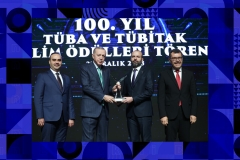
Four major awards in 5 years
Prof. Dr. Göktuğ Karpat, Faculty Member at Department of Physics, Faculty of Arts and Science, Izmir University of Economics (IUE) has been

The Physics Department Erasmus Agreement
Dear Students of the Physics Department at Izmir University of Economics, We are pleased to share with you an exciting announcement! Our university
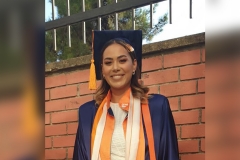
Loved physics, gave up her childhood dream
Senem Özdemir, who has been dreaming of becoming a pilot since childhood, graduated as the top student in the Department of Physics

Scientific visit to the Department of Physics
Dr. Parisa Majari came to visit our Physics Department. Dr. Majari who studied with Prof. Dr. Gürsoy Bozkurt Akgüç gave a seminar
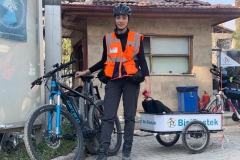
Ambassador of 'goodness'
Berfin Kolcu, a student of Izmir University of Economics (IUE) Department of Physics, went to Hatay, where thousands of people were under
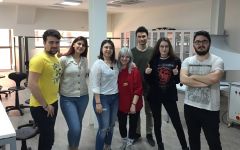
our student physics project at the finals
NEBULA rocket team, a branch of physics club established by our students is now at the finals after succesfully passing critical design


